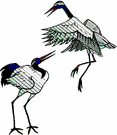More lower Arkansas Valley birding
Yesterday I drove down to the lower Arkansas Valley to check some additional hotspots and was well rewarded for early migration birds.
I stopped at Lake Meredith again since it was on my way. The only additions from my visit the other day were 2 Black-necked Stilts, about a hundred Aechmophorus grebes (the ones I checked were all Western), and about a hundred Am Coots.
My first target spot, a very productive hotspot located north of the town of Las Animas, was Blue Lake (like several lakes in the area, it is known by at least two names--Blue Lake also called Adobe Creek). My first sighting was a flock of 70 or so American White Pelicans circling the lake before taking off to the north. Another 15-20 remained on the lake. The only other birds there were a few Ring-necked Ducks, dozens of American Coots, some N. Shoverlers and Killdeer. Though bird life is pretty sparse today, it will improve as long as there is some water in it (this is another irrigation reservoir). Both Least Tern and Piping Plover, both listed under the Endangered Species Act, breed here.
A few miles south of Blue Lake at a small(but historically productive)pond at CR V & 10, I foudn 3 Semi-palmated Sandpipers in their plain brown basic plumage. As I was parking my car so I could use it as a blind, a flock of 16 dowitchers flew in. Though they are likely Long-billed Dowitchers, their calls (and lack of calling while feeding) made me check their identifying characteristics. I have asked an expert birder friend to check out some photos before I commit to the identification.
At another small pond a little further south were 5 Ruddy Ducks (including 1 male in alternate/breeding plumage). There were also pairs of N. Shovelers and Green-winged Teal here.
The next stop was Lake Hasty, a small lake below John Martin dam (John Martin is an enormous reservoir, originally constructed for flood control but now serving primarily as an impoundment reservoir for irrigation water and water owed to the state of Kansas). There were 80-90 American White Pelican here, plus 2 Double-crested Cormorants, and 6-8 white-headed gulls. Twelve Turkey Vultures worked a thermal over the campground (mistakenly identified as a flock of Golden Eagles by a couple camping there). Two Great Blue Herons stalked the shallow water around the lake and there were a lot of White-crowned Sparrows around the shoreline.
I made one last stop at dusk at the west end of the John Martin State Wildlife Area. There is a large area of cattails here that are renowned for rails and bitterns. I was able to raise one Sora Rail with my calls (I don't like to use tapes--it is too easy to play them too long, disturbing the birds; not only is it more difficult to emit one's own version of bird calls for very long but the birds tend to catch on that these are not real reducing the risks of lenghty disturbances). If you have never heard a rail or a bittern (these will be coming soon), this is a great place to be at dusk or dawn in later spring when these birds call regularly as part of their breeding behavior.
SeEtta










